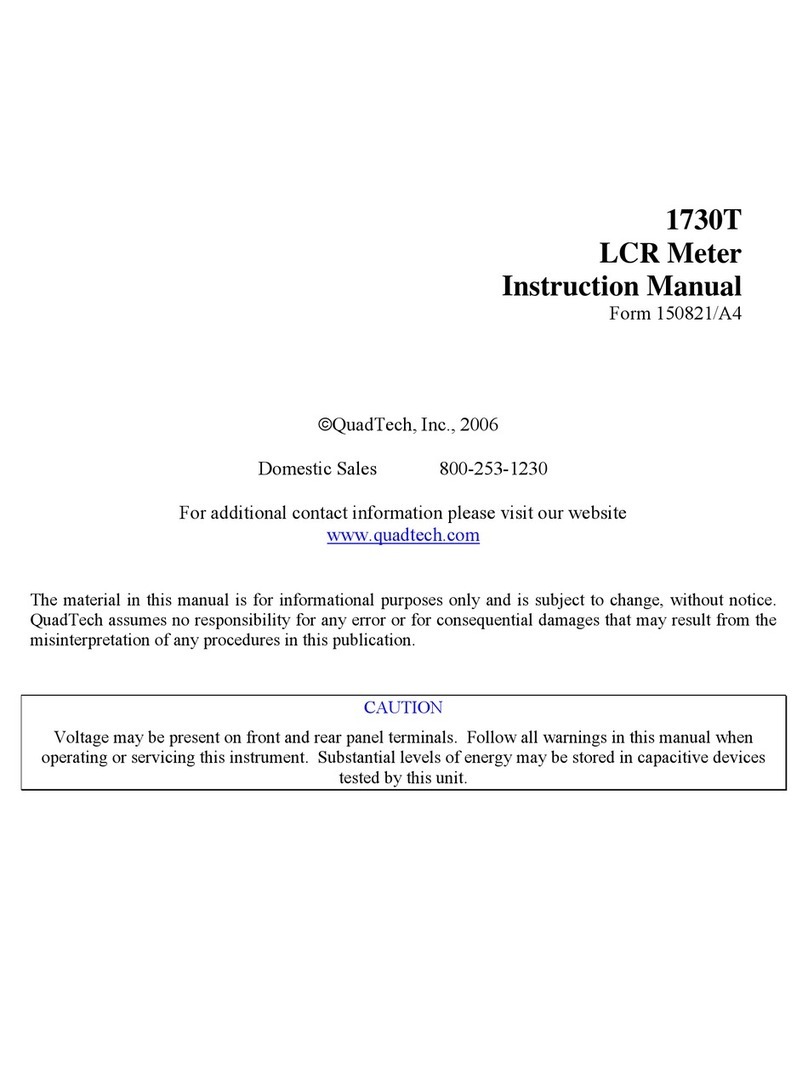
Page 4 of 76
Contents
Operation - Section 2 – Continued
2.4 MAIN INDEX ........................................................................................................ 35
2.4.1 Sequence Test ............................................................................................ 35
2.4.2 Step Test .................................................................................................... 36
2.4.3 Null ............................................................................................................ 36
2.4.4 W.V. Test ................................................................................................... 38
2.4.5 Compare ..................................................................................................... 39
2.5 MEAS DISPLAY .................................................................................................... 41
2.5.1 Test Voltage ............................................................................................... 42
2.5.2 Constant Current ........................................................................................ 42
2.5.3 Range ......................................................................................................... 43
2.5.4 Charge Time ............................................................................................... 44
2.5.5 Dwell Time ................................................................................................. 44
2.5.6 Speed........................................................................................................... 45
2.5.7 Trigger ....................................................................................................... 45
2.5.8 Rated Withstand Voltage (Vf) ................................................................... 46
2.5.9 Measurement Time (Tend) ........................................................................ 46
2.5.10 Maximum Charge Time (CHG Tend) ........................................................ 47
2.6 Connection to Device under Test............................................................................. 48
2.7 Measurement Procedure........................................................................................... 49
Interface - Section 3
3.1 RS-232 Interface ..................................................................................................... 51
3.1.1 RS232 Pin Configuration ........................................................................... 51
3.1.2 RS232 Specifications ................................................................................. 51
3.1.3 RS232 Commands ..................................................................................... 52
3.2 IEEE-488 Interface .................................................................................................. 53
3.2.1 Pin Configuration........................................................................................ 53
3.2.2 IEEE-488 Interface Function Codes and Messages.................................... 55
3.2.3 IEEE-488 Interface Commands .................................................................. 57
3.2.4 IEEE-488 Command Format ..................................................................... 59
3.2.5 IEEE-488 Commands - Detailed ............................................................... 60
3.2.6 Error Messages .......................................................................................... 71
3.3 Handler Interface .................................................................................................... 72
3.3.1 Trigger ....................................................................................................... 73
3.3.2 Handler Pin Assignments for Compare Operation .................................... 74
Service & Calibration - Section 4
4.1 General ................................................................................................................... 75
4.2 Instrument Return .................................................................................................... 75
4.3 Calibration ............................................................................................................... 75
4.3.1 1855 Verification Procedure ...................................................................... 76
4.3.2 1855 Verification Data Sheet ..................................................................... 76






























